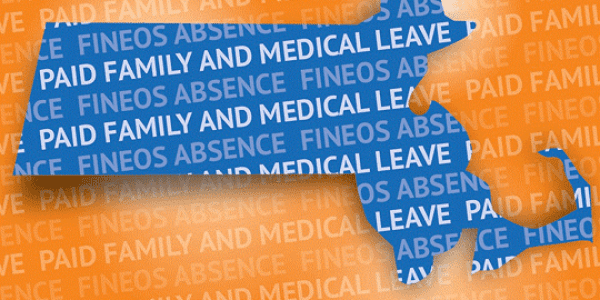Since our article last year about Governor Baker signing the Massachusetts Paid Family and Medical Leave Law, the program has continued to take shape. This article supplements our previous article on this law to provide you with the most recent updates.
On July 1, 2019, the final regulations regarding the Massachusetts Paid Family and Medical Leave law went into effect. The regulations provide important guidance regarding the medical leave, specifically defining the terms “medical leave,” “serious health condition,” and “continuing treatment by a healthcare provider.” The regulations state that “medical leave” is taken by a covered individual due to a “serious health condition,” which is defined as a condition that requires either inpatient care in a hospital, hospice, or residential medical facility or continuing treatment by a healthcare provider. “Continuing treatment by a healthcare provider” includes “any period of incapacity due to pregnancy, or for prenatal care.” It also includes a period of incapacity of more than three consecutive full calendar days and treatment two or more times within thirty days or treatment once within seven days of the first day of incapacity. Chronic, permanent or long term conditions, and conditions requiring multiple treatments also qualify as “continuing treatment by a healthcare provider.”
The new law applies to all employers, regardless of the number of people employed. Beginning on January 1, 2021, the law provides paid family leave to bond with a new child, to care for a family member who has a serious health condition, and for exigencies arising from a family member being on or being called to active duty in the Armed Forces. It also provides medical leave to individuals for their own serious health condition. The law covers current employees as well as former employees for twenty-six weeks past their termination date.
Under the new law, the following benefits are available to covered individuals:
- Family leave of 12 weeks per calendar year for the following reasons:
- To bond with the covered individual’s child during the first 12 months after the child’s birth or the first 12 months after the placement of the child for adoption or foster care with the covered individual;
- Because of any qualifying exigency arising out of the fact that a family member is on active duty or has been notified of an impending call or order to active duty in the Armed Forces;
- In order to care for a family member who is a covered service member; or
- In order to care for a family member with a serious health condition.
- Medical leave of 20 weeks per calendar year for a serious health condition.
- A maximum of 26 weeks of combined family and medical leave per calendar year.
- A maximum weekly benefit of at least $850 for the first year the plan is in effect. This amount will be adjusted every year.
- Intermittent family and medical leave or leave on a reduced schedule with the following conditions:
- Medical leave or family leave to care for a covered service member may be taken intermittently when medically necessary.
- Family leave due to any qualifying exigency arising out of the fact that a family member is on active duty or has been notified of an impending call or order to active duty in the Armed Forces may be taken intermittently.
- Family leave to bond with a child shall not be taken intermittently unless the employee and employer agree otherwise.
The family and medical leaves will be funded by payroll deductions and, in many instances, employer contributions too. The amount of the employer contributions will be determined by the composition and size of their workforce. Generally, employers with less than 25 employees will be exempt from making contributions. If an employer works regularly with self-employed contractors, then the self-employed contractors may count as part of the employer’s workforce under the law. Both the payroll deductions and employer contributions are set to begin on October 1, 2019. Employers will be required to submit and complete a quarterly report and submit contributions through MassTaxConnect by January 31, 2020.
Employers must also notify their employees about the benefits available to them under the new law. Posters available from the Massachusetts Department of Family and Medical Leave (https://www.mass.gov/orgs/department-of-family-and-medical-leave) must be hung in the workplace beginning on July 1, 2019. Starting on July 1, 2019, employers are also required to provide written notice of the benefits under the new law within 20 days of an employee’s start date. Employees must acknowledge receipt of the notice.
An employer may seek an exemption from participation in the public plan by offering a private plan that provides equivalent rights, protections and benefits. Private plans must impose no additional conditions or restrictions on the use of family or medical leave beyond those in the public plan and may not require an employee to supply more documentation than the public plan. Additionally, private plans may not cost employees more than the public plan. If an employer chooses to offer a private plan, then the employer may purchase a plan through an insurer or elect to be self-insured. There are additional requirements for self-insured plans, including maintaining a bond with the Department of Family and Medical Leave. To qualify for the private plan exemption, the employer must obtain approval from the Department of Family and Medical Leave. The employer must apply for the exemption no later than December 20, 2019, but applications are currently being accepted on a rolling basis.
If you have any questions about the Massachusetts Paid Family and Medical Leave Program and how it may affect you or your company, please do not hesitate to contact us



